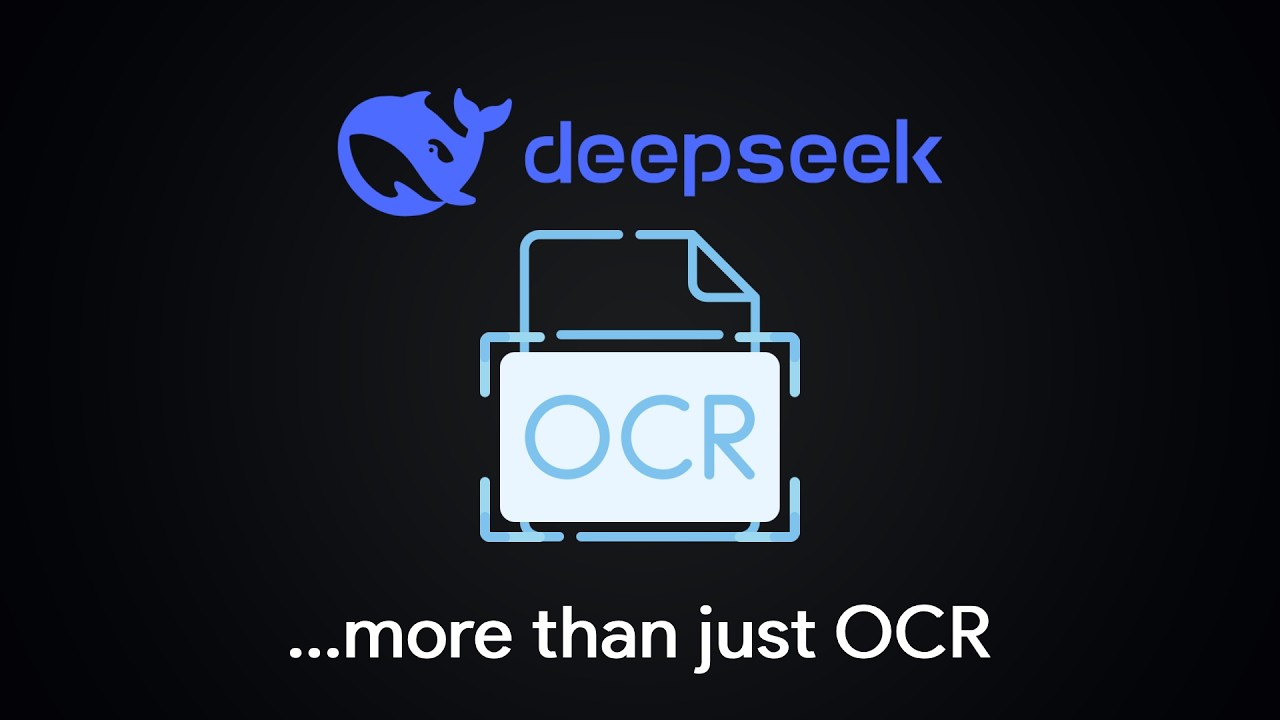DeepSeek OCR introduces a novel method of compressing large amounts of text into images, enabling AI models to process and recall vast textual information with significantly higher efficiency and longer context capacity than traditional OCR and language models. By converting text tokens into compact vision tokens through advanced encoding techniques, this approach promises to greatly expand AI memory capabilities and long-context understanding, with the technology and code openly available for further development.
The video discusses a groundbreaking development from DeepSeek called DeepSeek OCR, which goes far beyond traditional optical character recognition (OCR). While the model can process large amounts of text, its core innovation lies in using images as a form of highly efficient compression for text data. The researchers have demonstrated that a single image can store the equivalent of thousands of words, which the model can then decode with remarkable accuracy. This approach has significant implications for AI memory and long-context processing, potentially enabling models to handle much larger contexts than current large language models can manage.
One of the main challenges with large language models is their limited ability to process very long documents or conversations due to token limits. DeepSeek’s solution, called context optimal compression, leverages vision tokens to compress text tokens. For example, they can encode 1,000 text tokens into just 100 vision tokens with 97% accuracy, achieving a 10x compression ratio. Even at 20x compression, using only 50 vision tokens, the model maintains around 60% accuracy. This suggests a new way to store and recall vast amounts of textual information by rendering it as images, which can then be efficiently processed by AI systems.
The video also explains how images are tokenized for transformer models. Typically, images are divided into patches, each converted into tokens that represent small sections of the image. DeepSeek’s approach uses a two-stage deep encoder to efficiently extract information from high-resolution images without generating an overwhelming number of tokens. The first stage uses a SAM model to focus on important details, followed by a convolutional neural network (CNN) that compresses the image data. The second stage employs a CLIP model to analyze the compressed data with global attention, producing a compact and informative token representation.
DeepSeek’s model supports multiple modes with varying token counts, from a tiny mode with 64 tokens to a Gundam mode with about 1,800 tokens. This flexibility allows it to represent documents much more compactly than traditional methods. For instance, a document that would normally require 6,000 text tokens can be represented with fewer than 800 vision tokens, often with better performance. While the current research focuses on OCR tasks to validate the compression concept, the broader vision is to use this technique as a new form of memory compression for large language models and AI systems in general.
In conclusion, DeepSeek OCR is not just an OCR model but a novel approach to compressing and storing text information as images, enabling more efficient long-context processing. The video highlights the potential for AI systems to handle millions of tokens by converting text into vision tokens, significantly expanding their memory capacity. The code and model are available on GitHub and Hugging Face, inviting further exploration and experimentation. This innovation reflects DeepSeek’s ongoing efforts to push the boundaries of AI technology beyond conventional methods, opening exciting possibilities for future developments.
